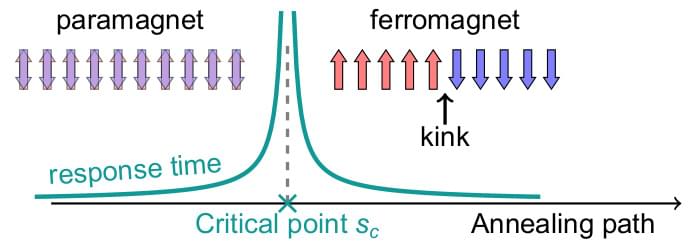The best examples are simple. This is especially true in quantum computing, where complexity can get out of hand pretty fast. A team of researchers at D-Wave, with collaborators from USC, Tokyo Tech, and Saitama Medical University, recently explored a quantum phase transition — a complex subject by anyone’s standards — in a very simple 1D chain of magnetic spins. Our work, published today in Nature Physics, studies quantum critical dynamics in a coherently annealed Ising chain. Here are a few things we learned along the way.
Programmable quantum phase transitions, as ordered
Phase transitions, such as water to ice, are commonly attributed to changes in temperature. But there is another type of phase transition —-a quantum phase transition (QPT) —-where quantum effects determine the properties of a physical system, in the absence of thermal effects. In a 1D chain, spins at the end of the simulation are either “up” or “down”, and we get “kinks” separating blocks of up spins and down spins (during the simulation, spins can be in a superposition of up and down). The density and spacing of kinks depend on, among other things, the speed and “quantumness” of the experiment. In this work we guided the programmable system of spins through a QPT and investigated the effect of varying parameters such as speed, system size, and temperature.
